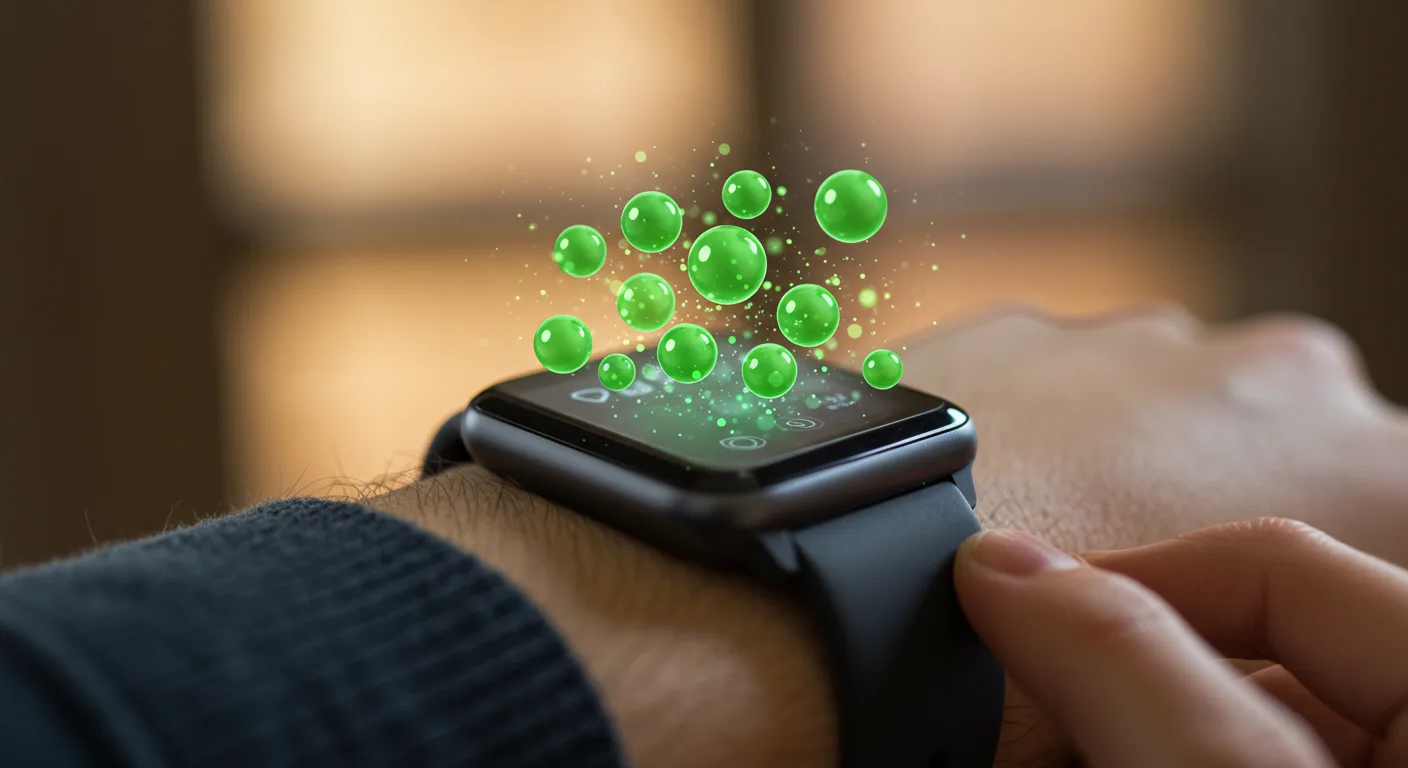Hidden Health Risk of Wearing Your Smart Watch 24/7: An emerging trend in the 21st century is the rise in cancer risks and other illnesses. As time goes on, groundbreaking progress is being made to find cures for these diseases and to raise awareness about their potential causes. Interestingly, many of these causes have been linked to everyday items in our homes and environments—one of which is the smart watch. Believe it or not, your smart watch has been associated with potential health risks, including cancer.

To make our lives more convenient and stay connected, smart watches have become almost inseparable from our daily routines. Aside from being a quick alternative to checking notifications without unlocking our phones, they’re equipped with sensors that help us track various health metrics. From stress levels to heart rate and sleep quality, it seems logical to keep them on at all times. However, the Hidden Health Risk of Wearing Your Smart Watch 24/7 is something we can no longer ignore. Let me explain why.
Read Also: Smart Watches and Their Role in Fitness and Healthy Lifestyle
How Your Smart Watch May Be Raising Your Risk of Cancer
The smart device itself isn’t necessarily increasing your risk of cancer. In fact, there haven’t been enough studies to confirm that. However, the band that holds the smart device to your wrist may be the real culprit. According to a recent study, the materials used in many smartwatch bands contain chemicals that have been linked to infertility and cancer.

These chemicals are known as perfluoroalkyl and polyfluoroalkyl substances (PFAS). PFAS are used in the manufacturing of many everyday items including fabric, non-stick pans, and even cosmetics. Research has connected PFAS to several health issues such as kidney disease, birth defects, and increased risk of prostate cancer.
Often referred to as “forever chemicals,” PFAS do not break down in the environment or in the human body. Alarmingly, they’ve been found in fish, soil, air, and water.
Read Also: How Your Smartphone is Secretly Damaging Your Brain.
15 Out of 22 Smartwatches Tested Contained PFAS
According to The New Paper, a Singaporean newspaper, the bands of 22 different smartwatches were tested for PFAS. Of those, 15 tested positive. This is especially concerning given how often we wear our smartwatches and how closely they remain in contact with our skin.
While PFAS typically enter the body through ingestion or inhalation, studies now suggest that prolonged skin contact can also allow these chemicals to enter the bloodstream.
The tested watches ranged in price from $89 to $799 and included major brands such as the Apple Watch. Interestingly, the more expensive models tended to contain higher levels of PFAS.
In the U.S., about 21% of adults use smartwatches. In the UK, that figure is 35%. On average, users wear their devices for 11 hours per day. This means approximately 54 million people in the U.S. and 13 million in the UK could be exposed to these harmful chemicals daily. That’s the Hidden Health Risk of Wearing Your Smart Watch 24/7 in plain sight.

How Exactly Is Your Smart Watch Introducing PFAS Into Your Body?
Most smartwatches come with flexible rubber or silicone straps, which are often interchangeable. It is these silicone-like straps that are suspected to be the source of PFAS exposure.
To ensure that the straps maintain their color and texture—despite constant exposure to sweat, skin oils, and environmental elements—manufacturers treat them with PFAS-based chemicals. While we traditionally think of PFAS as entering the body through ingestion or inhalation, research now shows that extended skin contact can allow these carcinogenic chemicals to absorb into the body.
More studies are needed to fully understand the impact of PFAS absorbed through the skin, but early findings are concerning.
You can read the published article here: Presence of Perfluorohexanoic Acid in Fluoroelastomer Watch Bands.
Researchers at Notre Dame University conducted chemical analyses on the bands and checked for the presence of fluorine—a strong indicator of PFAS. In 15 of the 22 products (about 68%), fluorine was detected.
Some watch bands disclosed the use of fluorine, but two that tested positive didn’t indicate any use of PFAS in their materials.
Notably, bands costing more than $30 (£23) had higher concentrations of fluorine compared to those priced under $15 (£11). Researchers also looked for other PFAS chemicals beyond fluoroelastomers and found that all 22 bands tested contained traces of at least one type.

The study suggested that these chemicals were likely introduced during the cleaning process in manufacturing.
While it’s still unclear how much PFAS is absorbed through the skin, a 2022 German study found that after 115 days of applying PFAS-laden sunscreen, 1.6% of the chemical was absorbed into the skin. On the more extreme end, a 2024 British study on skin cell cultures showed that about 58% of PFAS applied was absorbed.
The researchers concluded: “These limited studies suggest that dermal absorption of PFAS may represent a significant exposure route for short-chain PFAS when used in consumer products that are in contact with the skin.”
Read Also: How Your Smartphone is Secretly Damaging Your Brain.
Proceed With Caution
While the science is still evolving, Dr. Alyssa Wicks, one of the lead researchers, advises consumers to be mindful. “If the consumer wishes to purchase a higher-priced band, we suggest that they read the materials list carefully.”
The Hidden Health Risk of Wearing Your Smart Watch 24/7 may not be front and center in tech ads or product descriptions—but it’s a risk worth understanding. As we integrate more technology into our daily lives, let’s ensure we do so with informed caution.
RELATED ARTICLES
A new study establishes a link between sanitizers and brain development.




One thought on “The Hidden Health Risk of Wearing Your Smartwatch 24/7: Cancer Concerns Explained”